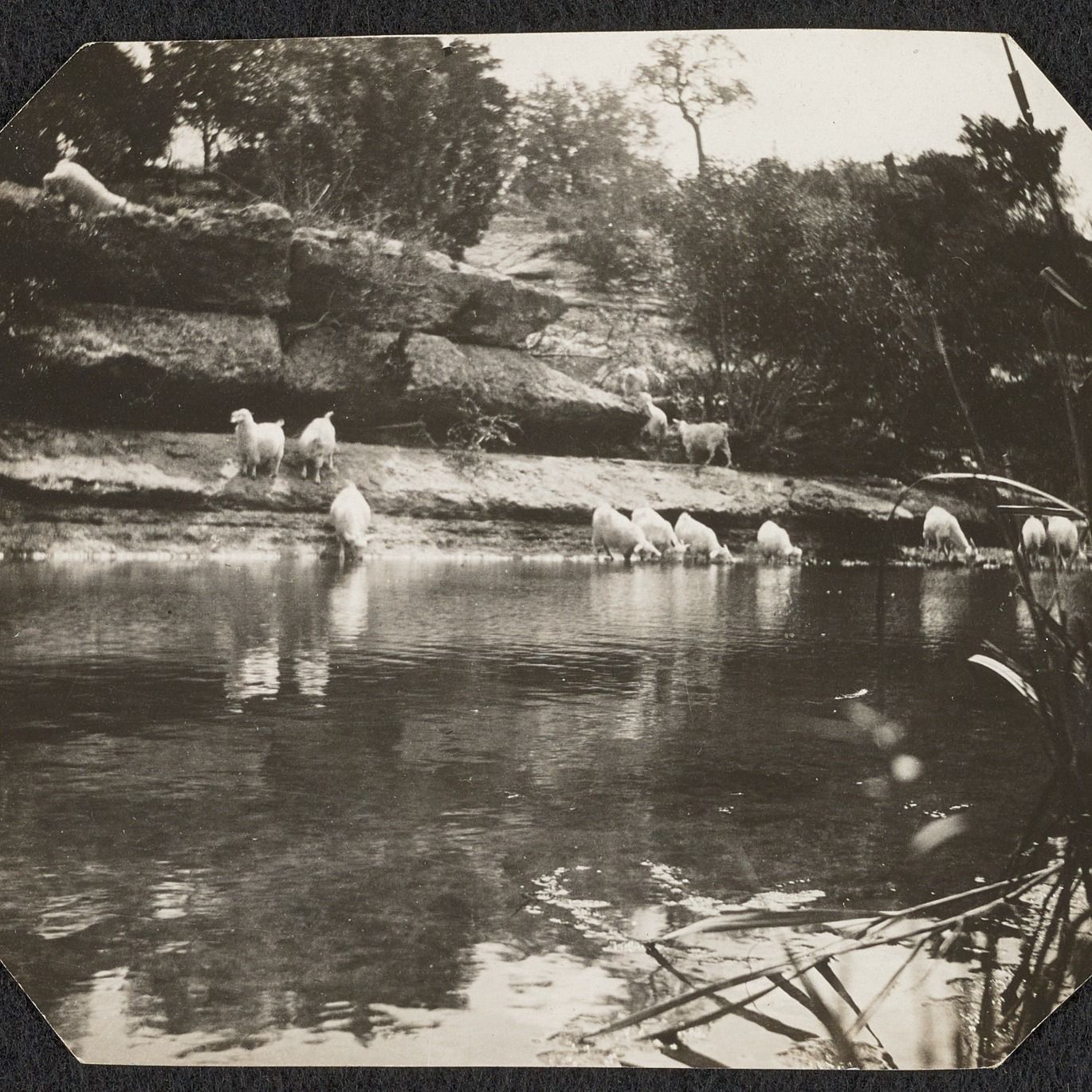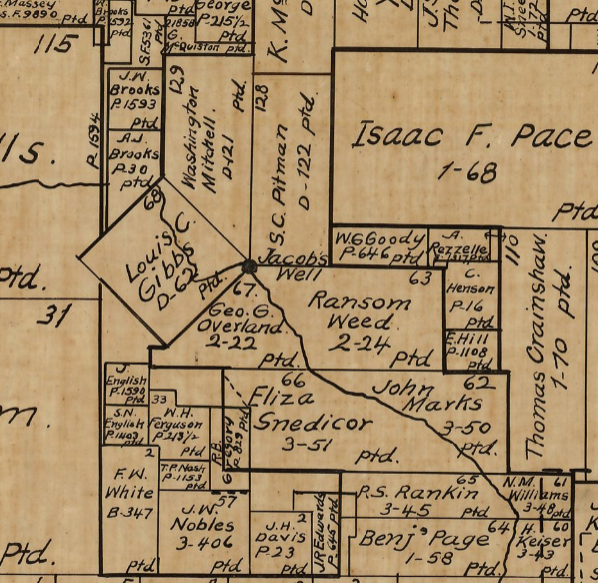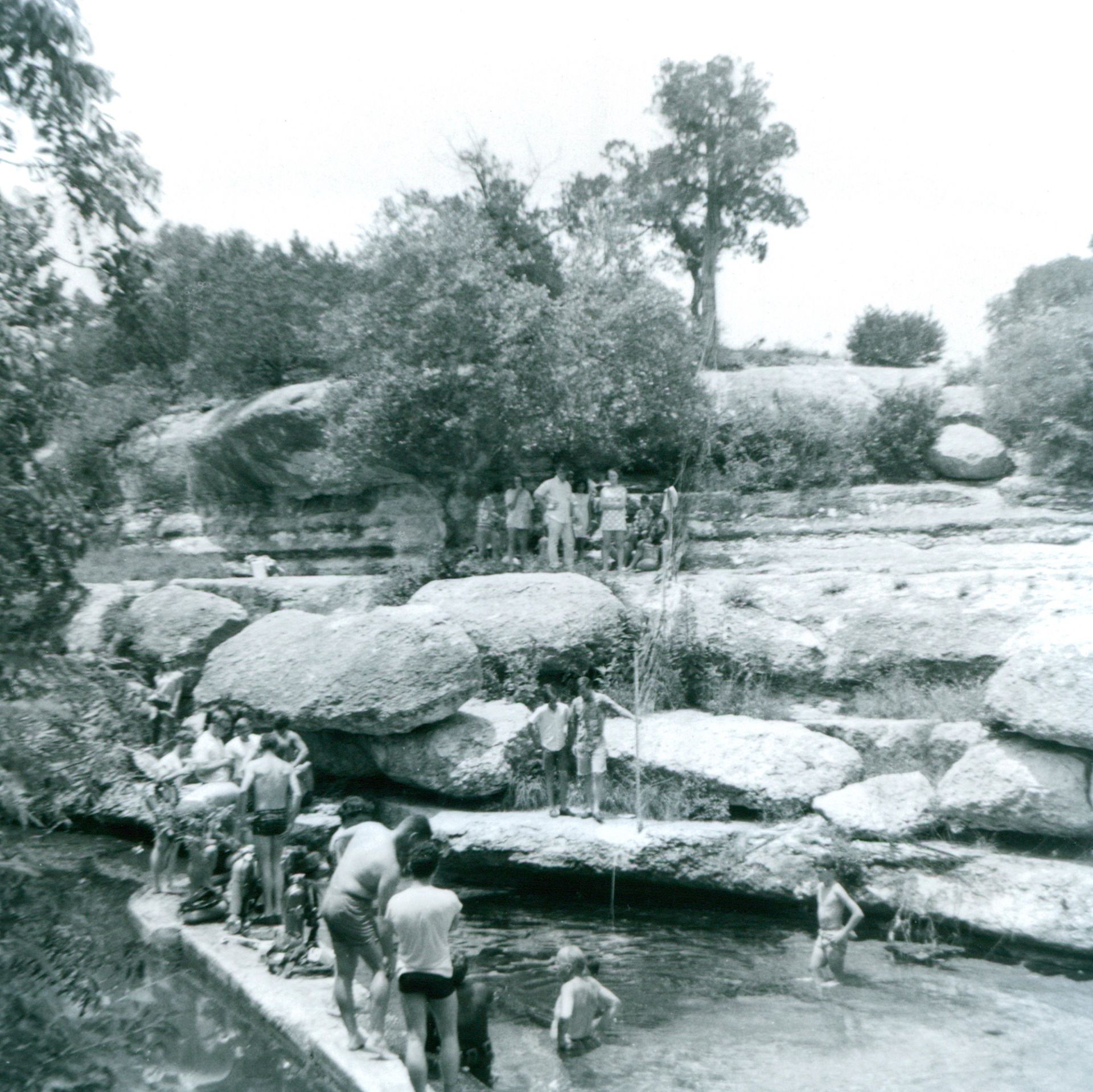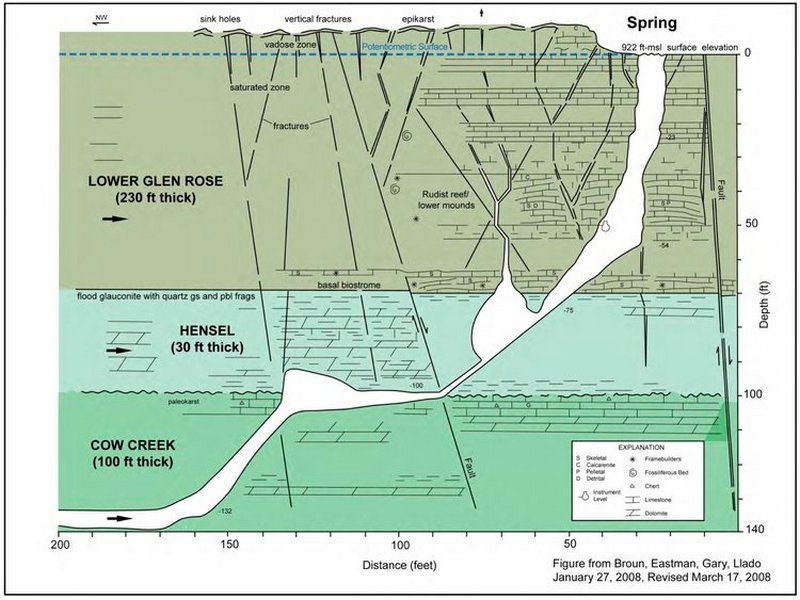Learn More About Jacob's Well
History
Jacob’s Well is an artesian spring which flows from the Trinity Aquifer and forms the headwaters of Cypress Creek near Wimberley, Texas. Cave divers with the Jacob’s Well Exploration Project (JWEP) have mapped over 6,000 feet of underwater passage with a maximum depth of 137 feet. Today, Jacob's Well is surrounded by the 81-acre Jacob's Well Natural Area, which serves as a protective barrier for habitat and water quality. However, the land surrounding this spring has been many things before it was a park.
Prehistory
Humans arrived in central Texas as early as 15,000 or 20,000 years ago. Early humans followed and hunted large Ice Age mammals like Mastodon, Mammoth, and extinct forms of Bison. After the Ice Age, early humans hunted Bison, White-tailed Deer, and Pronghorn Antelope. These nomadic groups moved frequently, often stopping where big herds would stop. These stopping sites often had some or all of these factors: A source of clean water, native plants, a form of shelter, and native species of wildlife - big and small. Springs, like Jacob's Well, would have been ideal sites for traveling peoples. A constant source of clean water to quench your thirst. Native plants providing sources of food, medicine, and dye for textiles and clothing. Limestone overhangs - a perfect spot to take a rest out of the elements.
Many different groups of people called central Texas, and the areas surrounding Jacob's Well, home. Some of those groups include Coahuiltecans, Tonkawa, Apache, and Comanche.
History
The present-day city of Wimberley was founded and settled in the mid-1800's. Many of the early settlers of Wimberley had been awarded land grants of 640 acres or 320 acres. These land grants were used to encourage settlement of Texas and were given to families (640-acres) and single men (320-acres). Many veterans of the Texas Revolution were also awarded land grants for their military service.
The land that makes up Jacob’s Well Natural Area originally consisted of five land surveys that all used the spring as a corner to tie the properties together. These surveys were conducted in 1847 by a prominent surveyor names Bartlett Sims. Origins of the name Jacob's Well stem from two different sources. In the early 1850’s William C. Winters, a San Jacinto veteran and early settler of Wimberley, hiked up Cypress Creek searching for its source and found an overflowing spring. It is said that Mr. Winters exclaimed, “like unto a well in Bible times.” Thus, some believe it was named ‘Jacob’s Well’. A separate story points to Jacob De Cordova, a prominent local land agent, who had a habit of naming things after himself.
The property changed hands many times over, consolidating and dividing. What is now Jacob's Well Natural Area was once a goat ranch and at another time an RV Park.
Funded by the 2007 Hays County Parks bond, the official Jacob’s Well Natural Area became a public open space in 2010. Today, a conservation easement exists over the 81-acre property which prevents the property from ever being developed or subdivided.
Jacob’s Well Natural Area remains a popular recreational destination today.



Geology and Hydrology
The Middle Trinity Aquifer is the primary groundwater resource for water supply in the region. Jacob’s Well flow responds to climatic variations of both short- and long-term cycles. Groundwater pumping from the Middle Trinity Aquifer also directly influences flow at Jacob’s Well. The combination of periodic drought cycles and increased groundwater pumping has significantly diminished spring flow in recent years. Groundwater use is managed and coordinated by the Hays Trinity Groundwater Conservation District through the Jacob’s Well Groundwater Management Zone.
Facts About Jacob’s Well
- Jacob’s Well Natural Area is a little over 81 acres.
- Jacob’s Well is the second-longest fully submerged cave in Texas.
- The water flowing from Jacob’s Well comes from the Trinity Aquifer. This aquifer is deeper than the Edward’s and more complex.
- The deepest part of the cave system is ~140 feet deep. The cave system has been mapped out and explored fully. The cave extends for about 1 mile underground.
- The water temperature stays a constant 68°F.
- An average flow from Jacob’s Well is 4 cubic feet per/second (CFS). This equates to ~2 million gallons of water per day.
- Jacob’s well is the headwaters, or beginning, of Cypress Creek, which flows through Blue Hole Reginal Park and feeds into the Blanco River.
- This is a Natural Area instead of a park; that means that focus here is placed on preservation and conservation first and recreation second.
- JWNA became a park in 2010. The area surrounding Jacob’s Well was private property from the mid-1800’s up until 2010. Our grand opening was in 2014.
- The land that makes up JWNA used to be many things, including a goat ranch and RV park.
- The name Jacob’s Well either stems from a biblical reference or the name of a prominent land agent by the name of Jacob de Cordova who had a habit of naming things after himself.
- Humans have known about Jacob’s Well for thousands of years and human presence in the area dates back to approximately 10,000- 20,000 years ago.
- At least 9 people have died SCUBA diving in Jacob’s Well from the 1960’s – 80’s.
- The submerged cave system features 15 inch restrictions, false exits, and silty floors, which make it an incredibly difficult dive. There is no light source or air in the cave system.


